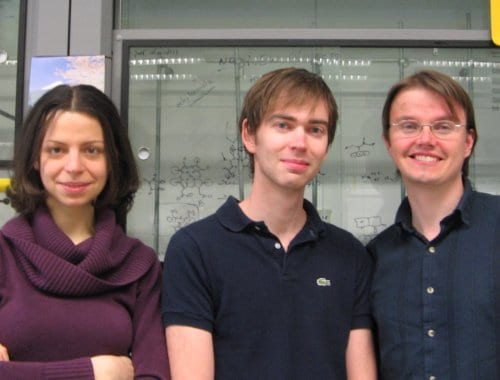
Researchers in the Netherlands have made a light-driven nano-scale motor that can rotate microscale objects that are 10,000 times bigger than itself. The motor consists of a molecule embedded in a liquid-crystalline film with a glass rod placed on top. As the molecule changes shape, it alters the structure of the film, which in turn makes the rod move (Nature 440 163).
The motor, which was developed by Ben Feringa of the University of Groningen and colleagues at Eindhoven University of Technology and Philips Research Laboratories, consists of a dumb-bell shaped molecule with a central carbon-carbon double bond that functions as an axle. The upper part of the molecule acts as a rotor while the lower part is the stator. The molecules are incorporated into a liquid-crystalline film.
When the molecule is illuminated with light that has a wavelength of 365 nm, the “helicity” of the molecule changes from right- to left-handed. In fluid mechanics, helicity is the extent to which corkscrew-like motion occurs and a moving fluid has helicity if it rotates about an axis parallel to the direction of motion. If the rotation is clockwise when viewed from the “front” of the fluid, the helicity is right-handed and if anticlockwise, it is left-handed.
The changes to the molecule’s helicity in turn alter the direction of the molecules of the rod-shaped molecules in the liquid-crystal film itself. Removing the light source makes the molecule’s helicity switch back again, as can heating the molecule. The team found that the molecule could be rotated through 360° by carrying out two photochemical steps, each followed by a thermal step.
The team used the motors to move glass rods with dimensions of 5 microns by 28 microns. The rod rotated at an average speed of 0.67 rpm during the photochemical steps and at 0.22 rpm during the thermal steps. Feringa points out that the rotation is, however, caused by the collective action of several motor molecules. “The work is a stepping stone to functional motors that can act as tiny machines or perhaps power a nanocar”, says Feringa.




